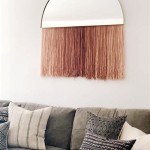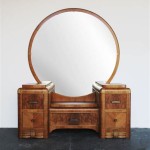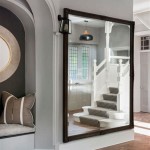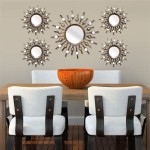Oval Beveled Mirror Antique: A Reflection of History and Style
Antique oval beveled mirrors represent a fascinating intersection of history, craftsmanship, and interior design. Their enduring appeal stems from a combination of elegant form, intricate detailing, and the evocative sense of the past they bring to a space. Understanding their historical context, manufacturing techniques, and methods of identification can greatly enhance appreciation for these beautiful objects.
The use of mirrors dates back centuries, with early examples made from polished obsidian, metal, and even water. The development of glass mirrors, however, marked a significant turning point. Early glass mirrors were often small and expensive due to the complex manufacturing process. As technology advanced, larger sheets of glass became more readily available, leading to the increased popularity of mirrors in interior decor, particularly during the 18th and 19th centuries.
The oval shape emerged as a favored form for mirrors during these periods. The soft curves of the oval provided a pleasing contrast to the often angular lines of furniture and architectural features. Furthermore, the oval shape lent itself well to elaborate framing and decorative elements, allowing artisans to showcase their skills.
Beveling, the process of angling the edge of a mirror, became a defining characteristic of these antique pieces. This technique adds depth and dimension, creating a frame of light and shadow around the reflective surface. Achieving a precise bevel required considerable skill and specialized tools. Early beveled edges were often created by hand-grinding the glass against abrasive stones, a labor-intensive process that contributed to the value of these mirrors.
The frames of antique oval beveled mirrors are as diverse as the periods and styles they represent. Common materials included wood, plaster, and gesso, often embellished with intricate carvings, gilding, or painted details. Popular motifs ranged from classical elements like acanthus leaves and scrolls to more naturalistic depictions of flowers, foliage, and animals.
Identifying authentic antique oval beveled mirrors requires careful examination. Several key factors can help distinguish genuine antiques from reproductions. The glass itself offers important clues. Antique mirrors often exhibit slight imperfections or waviness in the glass surface due to the limitations of early manufacturing techniques. These imperfections, often referred to as "seeds" or "bubbles," are not considered flaws but rather evidence of the mirror's age and authenticity.
The back of the mirror can also provide valuable information. Antique mirrors typically feature a silvered backing, which can tarnish or develop a speckled appearance over time. Later mirrors may have a different backing material, such as aluminum. Examining the frame is equally crucial. Look for signs of age and wear, such as patina, cracking, or repairs. These imperfections can actually enhance the value of an antique, as they attest to its history.
The style of the frame can also offer clues to the mirror's age and origin. Researching various historical design periods, such as Victorian, Rococo, or Art Nouveau, can help identify specific stylistic elements and motifs associated with those eras. Consulting reputable antique dealers or appraisers can provide further expertise in authentication and valuation.
Caring for antique oval beveled mirrors requires a gentle approach. Avoid using harsh chemicals or abrasive cleaners, which can damage the delicate glass and frame. Dusting with a soft cloth is generally sufficient for regular cleaning. For more stubborn dirt, a slightly damp cloth can be used, followed by immediate drying. Protecting the mirror from excessive humidity and temperature fluctuations can help prevent damage to the frame and silvering.
Displaying antique oval beveled mirrors requires consideration of both aesthetics and preservation. Hanging the mirror on a sturdy wall is essential to prevent damage from falls. Avoid placing the mirror in direct sunlight, which can fade the frame and potentially damage the silvering. Consider the surrounding decor and choose a location where the mirror can be both appreciated and protected.
Incorporating an antique oval beveled mirror into a modern interior can add a touch of elegance and history. These pieces can serve as focal points in living rooms, dining rooms, bedrooms, or hallways. Their reflective surfaces can also help brighten a space and create an illusion of greater size. Whether used as a standalone statement piece or incorporated into a larger decorative scheme, antique oval beveled mirrors offer a unique blend of artistry and functionality.
The enduring appeal of antique oval beveled mirrors lies in their ability to transcend mere functionality and become objects of beauty and historical significance. By understanding their history, construction, and methods of identification, one can truly appreciate the craftsmanship and artistry embodied in these timeless pieces.

Large Antique Oval Beveled Wall Mirror For At Pamono

Large Antique Oval Beveled Wall Mirror For At Pamono

Antique Large Oval Fancy Ornate Beveled Wall Mirror

Midcentury Italian Venetian Oval Beveled Mirror With Painted Floral Etching Country French Interiors

Antique Mirror Cast Metal Dresser Iron Hand Beveled Oval

Antique Vintage Beveled Glass Mirror W Ornate Old Gold Metal Oval Frame Framed Drawings

French Antique Carved Burnished Gold Oval Beveled Mirror

Antique Victorian Oval White Beveled Mirror Chairish

Item M818 Vintage Oval Bevel Edge Framed Mirror C 1970s Mccarneys Furniture

Oval Antique Hammered Metal Pewter Arts Crafts Bevelled Wall Mirror








